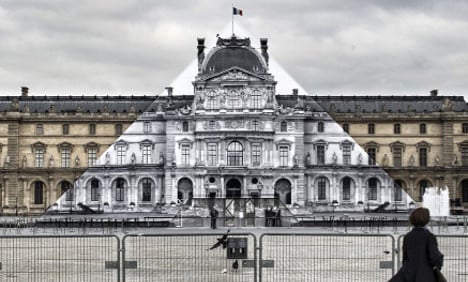And so the Pyramid disappear … @museelouvre #Paris (until 28th of June) – pic.twitter.com/op95UBQVgN
— JR (@JRart) May 25, 2016
MUSEUM
Paris: Street artist makes the Louvre pyramid disappear
Street artist JR has apparently made the famed pyramid vanish from the top of the Louvre museum in Paris.
Published: 25 May 2016 09:26 CEST

Photo: JRart/Twitter
If you're strolling through the 1st arrondissement of Paris today, you might be surprised at what you don't see at the Louvre.
French artist JR has spent the past few weeks covering the famed glass pyramid with paper sheets, which when put together will replicate the Louvre's historic palace that stands behind it.
In other words, if you're standing in the exact right spot, you'll notice that the pyramid itself has “disappeared”.
“The Pyramid is one of the most photographed French monuments,” the 33-year-old artist said.
“I am re-directing its energy, because people are going to have to move around it. They are going to look for the best angle to get the full impact of the anamorphic image, and really make the Pyramid disappear.”
And the finished product, which was completed on Wednesday, looks pretty impressive.
The project has taken a few weeks:
Check it out in the first arrondissement today.
Url copied to clipboard!


 Please whitelist us to continue reading.
Please whitelist us to continue reading.
Member comments